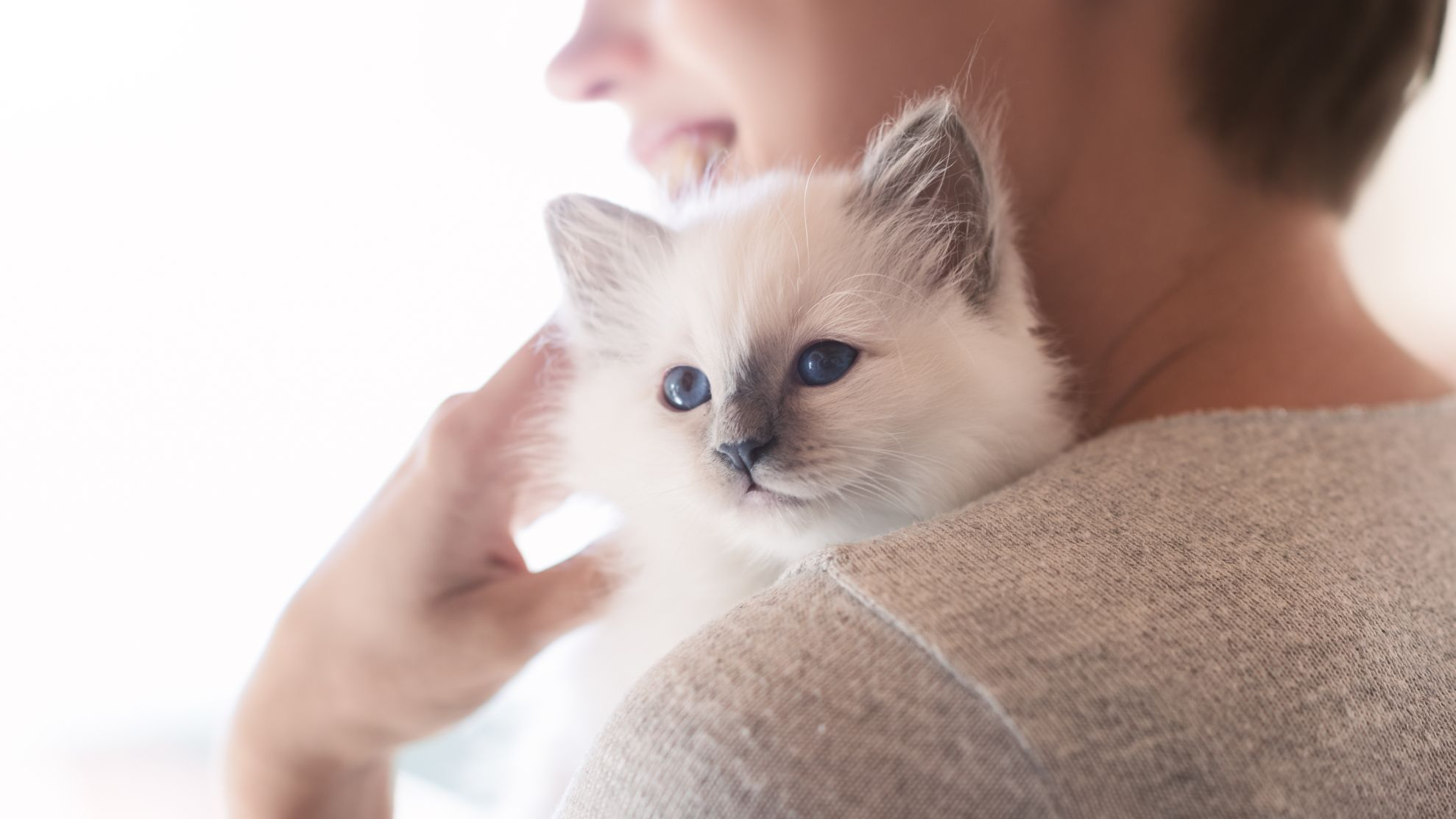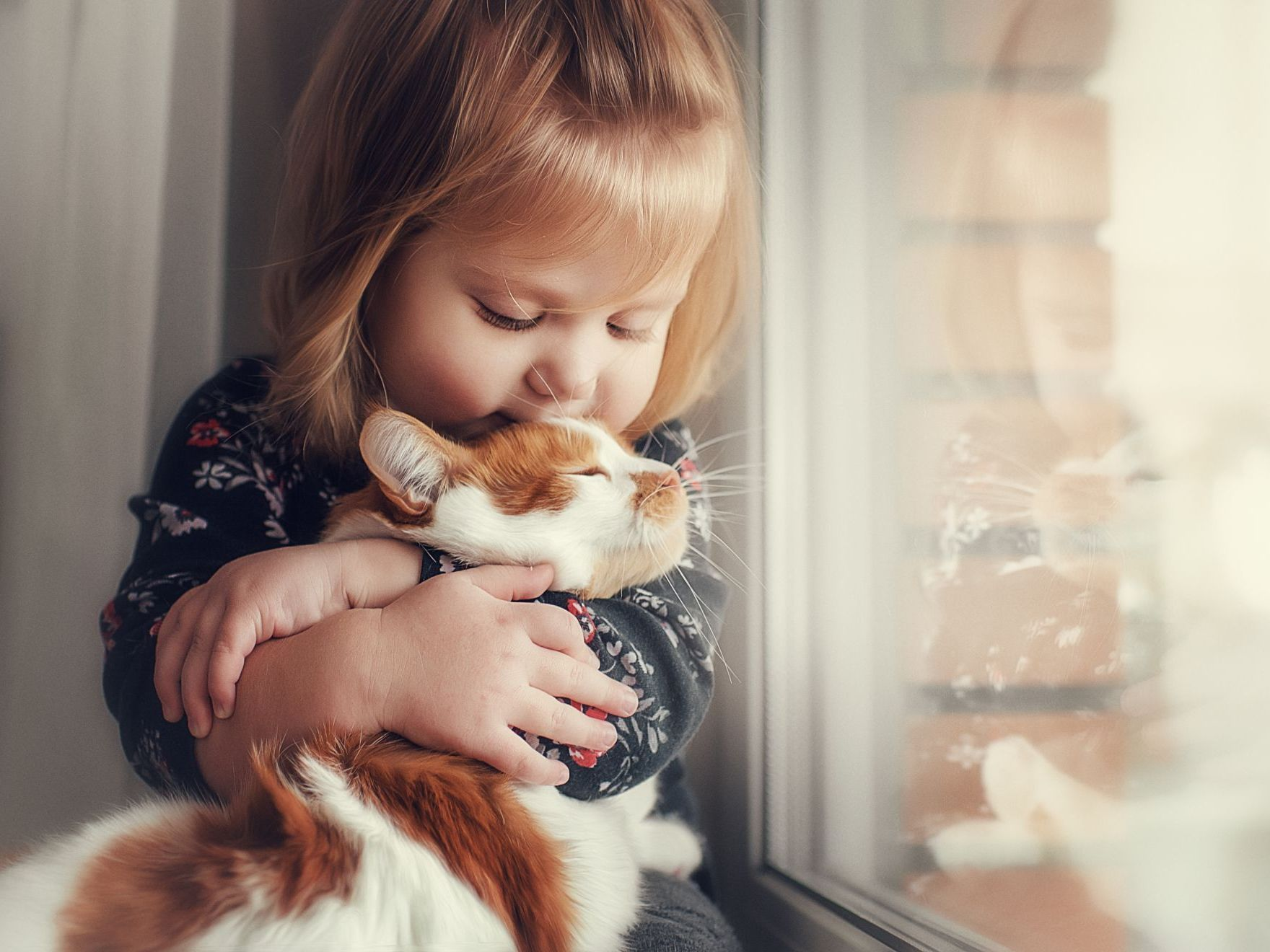Leaving your kitten home alone
We advise against leaving pets alone for long stretches. Companionship can prevent emotional distress and destructive behaviour. Speak to your veterinarian for recommendations.
Leaving your kitten home alone for the first time can feel daunting. But there are steps you can take to help them feel content in their own company. Read on to discover trustworthy training techniques and how to avoid potential separation anxiety.
Article

Leaving a cat alone for the very first time
Your new cat or kitten has recently joined the household. You’re having so much fun together and settling into this new way of life. The thought of leaving your kitten at home alone may raise many questions.
However, teaching a kitten or cat to feel comfortable in their own company will contribute to your kitten's good health and well-being.
If you’ve adopted an older cat, they may well appreciate their moments of solitude. But kittens and younger cats need plenty of interactive play and socialisation. They also require constant access to fresh water and need to be fed the necessary kibble portions to support healthy growth.
Rest assured: cat-sitting is an option if you can’t take time off work for your kitten. This is still responsible pet care, so long as you choose someone who has experience and who your kitten takes a liking to.
How long can you leave your kitten alone?
Sure, with kittens, there’s no walking or toilet business outdoors like there is for dog-owners. However, don’t fall into the trap of thinking your kitten is independent from day one.
As your kitten settles into their daily routine, including their feeding and sleep schedules, you will need to be on hand for interaction and attention. A kitten who is left alone for too long before they are ready can contribute to loneliness and anxiety.
Every kitten is unique, so the following should be viewed as a general guideline.
Ideally, your kitten should not be left alone for more than a couple of hours during their early months (up to six months).
When they are older and fully settled into their environment, they can be left alone for up to a work day. During this time they should always have easy access to fresh water and appropriate food portions.
However, it is not our advice to leave your cat alone for longer than this as their social and mental well-being will be impacted.
If you are unsure as to how long you can leave your cat home alone, you can always check with your vet who will be able to offer their professional opinion.
Common signs that suggest your cat or kitten is feeling lonely
Do kittens get lonely? In short, yes, it is possible.
Much like us humans, cats can be creatures of habit. They will benefit from a daily rhythm, peppered with playtime, meals, and cuddles.
Before delving into how best to prepare your kitten or cat for being left alone, let’s go over common signs of stress in cats.
- Stuck to you like glue. A clingy cat that constantly follows you around the house may be a sign of loneliness.
- Showing their teeth. If your cat suddenly displays aggressive behaviour, this may be a behavioural expression of frustration that comes from feeling lonely.
- Playing dirty. If your kitten or cat suddenly starts peeing on your belongings, i.e. anything with your scent on it, they don’t appreciate being left alone.
- Too invested in their appearance. Overgrooming in cats and kittens is a common sign of anxiety, which may stem from being left alone.

How to safely leave your kitten alone?
The moment has arrived—it’s time to leave your kitten alone for the very first time. To minimise the mischief and mayhem during your absence, here’s a checklist for how to leave them in the best conditions.
You need to make sure that your cat or kitten’s safety is guaranteed. Double-check that hazardous items such as electric cables, glass, rubber bands, and so on are safely locked away.
If you have a balcony, make sure it is also cat-proof. While you’re home, it’s lovely that your kitten or cat can enjoy some fresh air and get attuned to outdoor noises and smells. A cat net will be useful in preventing kitty from trying to escape or accidentally falling.
Do a final check that all windows and doors are locked before leaving the house.
Litter box maintenance is essential from day one, so it should be clean before you leave the house. Make fresh food and water available, whether via an automatic cat feeder and water fountain, or in bowls.
Make sure your kitten’s safe space is nice and cosy. A blanket that they can knead or something with your scent on it will provide an extra layer of comfort during your absence. Leave the radio on at a reasonable level, as background noise can help them feel less lonely.
Before you leave the house, spend some additional time playing with your cat or kitten. If they are a little tired out, it can help reduce a feeling of loneliness when you leave. Leave your kitten with some of their favourite toys, if safe to do so, as a welcome distraction to your absence.
If you would like a friendly neighbour or family relative to check in on your kitten during your absence, don’t hesitate to ask them. The more your feline knows the person popping in to give them a cuddle, the more comforted they will feel in their presence.
Making a show of leaving your cat or kitten can create anxiety or stress for them. They will pick up on your emotions and potentially replicate them, so try to stay calm and not show if you are worried or upset.
The benefits of socialising your kitten
Start as soon as possible with kitten socialisation. Their first eight weeks are considered the most significant phase, which normally takes place with the breeder and their mum. But it doesn’t stop there!
If you adopt a kitten, speak to the animal shelter and try to assess if they have already been socialised or not. If they don’t know or if they suspect that the answer is ‘no’, that’s ok. It may just take a little more time for your kitten or cat to adapt to their new home and environment.
So, exposure to the outside world, other pets and people is an important part of your cat or kitten’s socialisation training. Of course, you don’t want to go too fast and frighten them.

Always supervise children
You’re excited about the newest member of the household—so it’s normal that any children you live with will feel the same. Spend time teaching them how to gently interact with your kitten or cat. Children should also understand that they can’t make too much noise or chase after the kitty, to maintain a calm environment. And never leave the children unsupervised around pets.

Other household pets
Meeting other animals is a huge part of cat or kitten socialisation. If you have a dog, ensure that they meet your cat in as calm a condition as possible. You may also want to scent-swap quite quickly, by switching their bedding for example, to help facilitate the process. And make sure that your feline has a safe space that they can retreat to when needed.
If you have smaller animals, such as rabbits, hamsters or guinea pigs, keep them away from your cat or kitten. This is because of their sporting ancestry, which can make them see smaller animals as potential prey.
How to help your kitten feel comfortable alone
If you are welcoming a kitten to a new home or have moved house, you’ll want to smooth the way so that, if you do have to pop out for a bit, your kitten doesn’t experience separation anxiety.
Here are some ideas to help you successfully make this a smooth experience for your pet. It will be their home, after all.
By following these steps, you can create a stimulating but calm environment for your cat or kitten. This will help them to feel comfortable in their new home and minimise problems such as separation anxiety and loneliness when you go out.
If your feline does display any behaviour as outlined in this article, speak to a professional trainer or your vet for advice.
Related Articles
Like & share this page

